Two faces of the catholic church. Francis of Assisi: a man "not of the world"
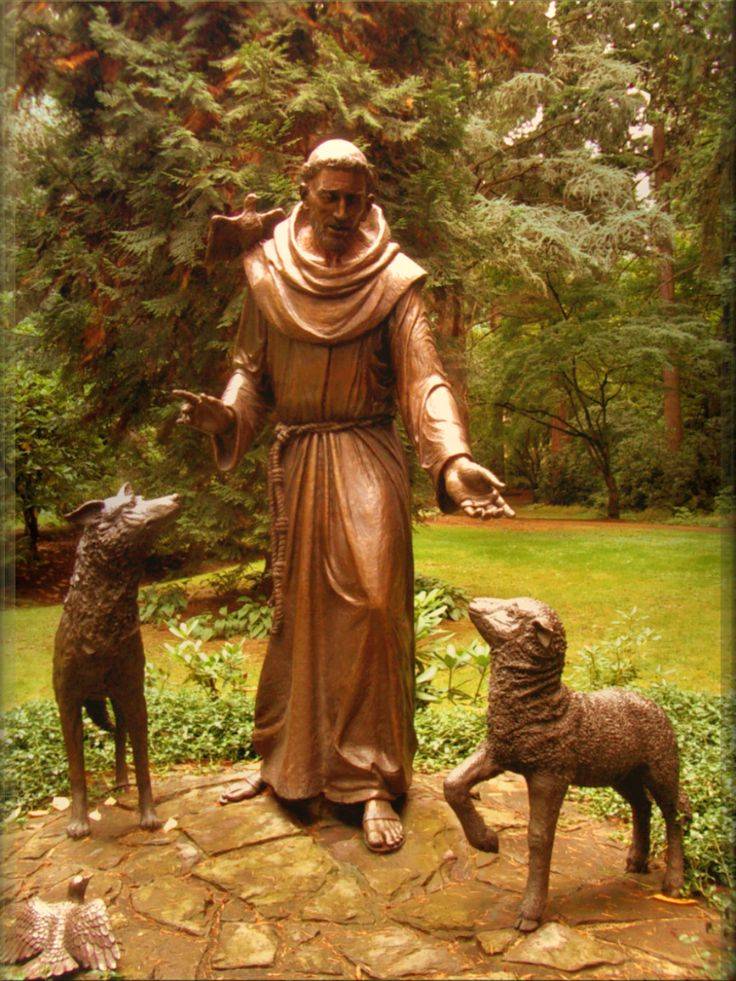
In the last article, we talked about Dominica Guzman, one of the anti-heroes of the Crusade against the Albigensians. He founded the monastic Order of “Brothers Preachers,” laid the foundation for the papal Inquisition, and was canonized by the Catholic Church in 1234. But at the same time he lived during this cruel time, who became one of the best Christians in all history of humanity. According to Chesterton, he "loved not humanity, but people, not Christianity, but Christ." His name was Giovanni Bernandone, but he went down in history under the name of St. Francis of Assisi.
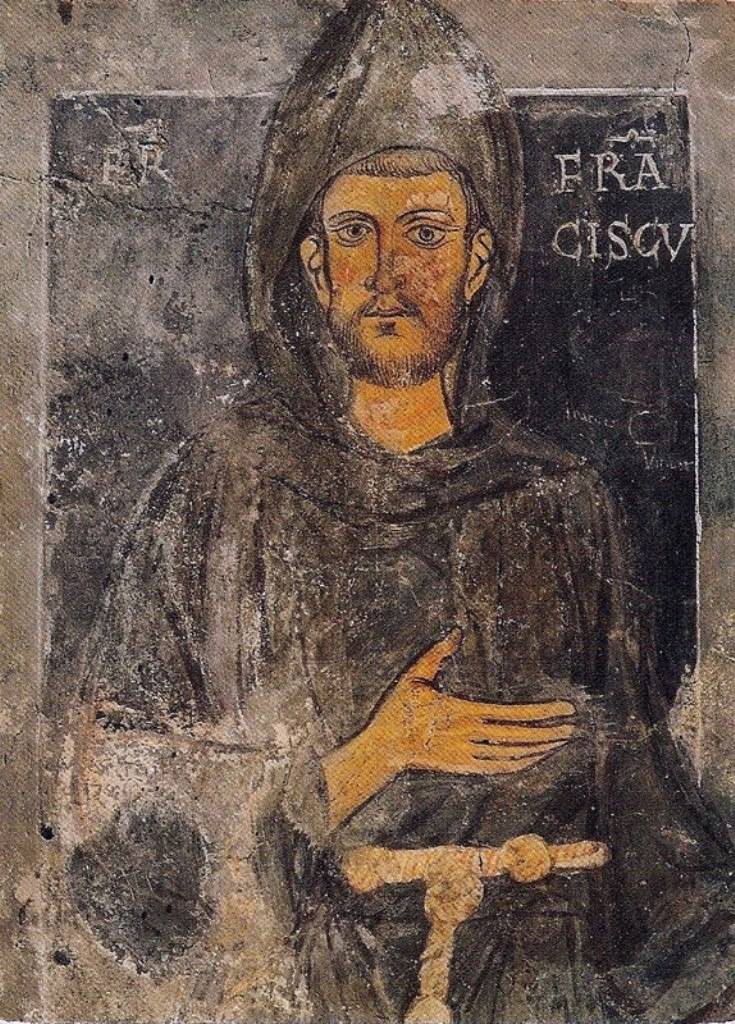
Opposite of Dominic Guzman
Information about his life, in addition to canonical sources, is known from stories collected by the monks of this order in the XIV century ("Flowers of St. Francis").
Two Lives of St. Francis ("Big" and "Small" legends) were written by Giovanni Fidanza, better known by the nickname given to him by Francis: blessing a sick boy brought to him, he said: “O buone venture!” (“Oh, happy fate! »)
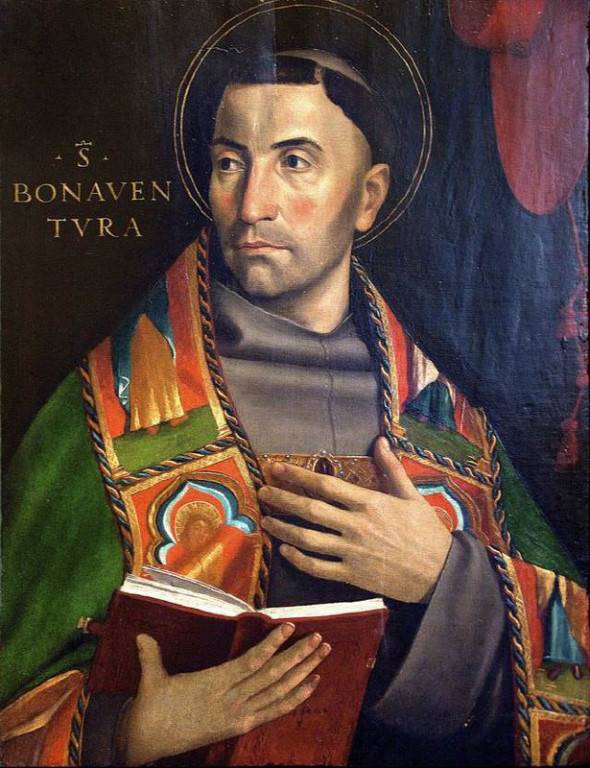
The future saint was born in 1181 (in 1182, according to other sources) in the Italian city of Assisi (the name comes from Mount Assi standing next to it), located in the historical region of Umbria. He was the only son of a wealthy merchant - a member of the guild of cloth dealers (the family also had two daughters).
At baptism, he received the name Giovanni (Latin - John). Francis (more precisely, Francesco) is his middle name that his father gave him, either in honor of his beloved French wife, or because his trading activities were closely connected with France. Under the name Francis, this saint is known because the Voice, heard by him at first in a dream, and then before the Crucifixion, addressed him so. Since then, he himself began to call himself only by that name.
Like St. Augustine, Giovanni in his youth stood out little among his peers and even in the stories of this period of his life even the most reverential lives often use the epithets “loose” and “dissolute”. He did not even think of a spiritual career, thinking more about the military field. In 1202, Mr. Giovanni took part in the Assisi war with Perugia, during which he was captured, and spent in the local prison for about a year. Here for the first time the character of the future saint showed up: the other prisoners considered one of his unfortunate comrades as a traitor and a coward, and Giovanni was the only person who did not interrupt communication with an outcast.
Voice of Heaven
Returning home, Giovanni saw himself in a dream in the middle of a huge hall, the walls of which were hung weapons, and on each blade or shield was a sign of the Crucifixion. Someone invisible said to him: "This is for you and for your warriors."
At that time, the Neapolitan forces opposed the emperor’s army (Guelphs and Gibbelins, you remember), and he decided to join them.
Having told his parents that he would return as a hero, he left town on the same day, but he saw another dream on the road: “You did not understand the first vision,” said the Voice, “return to Assisi.”
Returning home meant shame, but Giovanni did not dare to disobey. He gave his armor, which were worth a fortune at that time, to the ruined knight.
One of his friends, paying attention to an unusual thoughtfulness, asked if he was going to marry? Giovanni answered in the affirmative, saying that he had already chosen "a wife of extraordinary beauty and righteousness." He meant poverty, but then, of course, no one understood him.
Soon before the crucifixion, he again heard a familiar voice calling him Francis: "Go and restore My House, which, as you see, is in decline."
Many scholars believe that the discussion was about the Catholic Church, but Francis decided that this “house” was the abandoned church of St. Damian, which he passed by during a recent pilgrimage to Rome. To fix it, the young man sold his horse and several rolls of silk from a family shop. This was the reason for his quarrel with his father, who was supported by Bishop Assisi, saying that good deeds are not done with the help of evil deeds. Giovanni returned the money and left home. Now he begged the townspeople for the stones that he carried on his shoulders to the dilapidated church in order to repair its walls. Francis then renovated two more chapels - St. Peter near Assisi and St. Mary and all the Angels in Porciunculus. Near the latter, he built a hut for himself, around which every year on the Trinity day his followers began to build huts - this was the beginning of the general capitals of the Order.
Tradition claims that, like Christ, St. Francis at the beginning of the journey chose 12 comrades, and one of them, like Judas of the New Testament, hanged himself - “it was Brother John with a Hat who put on a rope around his neck” (“First Flower” ) However, in reality, at first there were three of them: Francis himself, Bernard of Quintavalle, and the abbot of one of the local churches, Pietro. To understand the purpose and fate of each of them, Francis drew a cross on the Gospel and opened it three times at random: the lines that were opened were perceived as a prediction. The first passage spoke of a rich young man, a camel and a needle eye - and Bernard, a wealthy merchant and honorary citizen, gave his property to the poor. The second passage turned out to be Christ's advice not to take money, a bag, a change of clothes, or a staff - Pietro, a canon of one of the cathedrals in Catania, became a vagabond preacher, sacrificing his spiritual career. Francis got a text that said that anyone who wants to follow Christ must reject himself and bear his cross. Francis obeyed the command from above. “No one will call him a business man, but he was a man of action,” Chesterton will later say about our hero.
Francis of Sermon from Assisi
Since 1206, Francis walked around the country, delivering a sermon not only to people, but also to animals and birds. Not surprisingly, in 1979, John Paul II “appointed” him as the heavenly protector of ecologists.
He achieved a meeting with the emperor only to ask him not to hunt larks, and "even had worms for love ... and he collected them from the road and carried them to a safe place so that travelers would not crush them." In stories about the miracles revealed by Francis, this saint never even ordered animals and birds, but only asked them, for example: “My little sisters, if you said you wanted to, let me tell you too.”
As an illustration of Francis’s humility, “The Seventh Flower” tells how one day, while fasting, he symbolically tasted bread - “so that he wouldn’t inadvertently stand up to Jesus Christ regarding fasting”. But, to be fair and impartial, one can also see carefully concealed pride in this desire to “voluntarily give up the primacy to Christ,” since the very idea that one can be on a par with the Savior of mankind is highly doubtful and absolutely unacceptable to any Christian.
Francis was also a poet (“the juggler of God,” as he called himself). He composed his simple poems and songs not only in the Umbrian dialect of the Italian language, but also in Provencal - the language of the troubadours, which at that time were burned by hundreds in southern France. In addition, Francis himself and his followers preached the renunciation of wealth, led a wandering lifestyle, so that the Inquisitors sometimes mistook the Minorite brothers for Cathars or Waldensians. As a result of this mistake, five Franciscans were executed in Spain. Some researchers consider it a miracle that the future saint was not burned during his travels. However, it is difficult to say how his fate would have been if he had been in Occitania at that time. There, the meeting of future saints (Francis of Assisi and Dominic Guzmán) might have looked quite different from what it was represented on this sculptural composition in the royal monastery of St. Thomas (Avila, Spain):
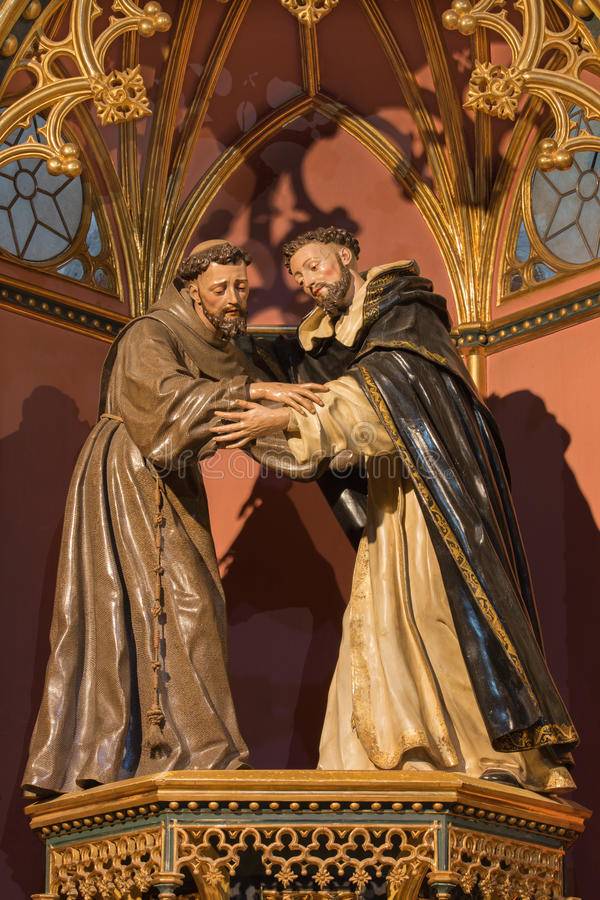
(The semi-legendary meeting of Francis and Dominic in 1215 in Rome was described in an article Dominic Guzman and Francis of Assisi. “Not the world, but the sword”: two faces of the Catholic Church).
And in Italy, at first, not everyone was touched by the sermon of a young ascetic. It is known that once he was beaten and robbed by robbers, and barely managed to get to the nearest monastery, where he washed dishes for a while in exchange for food. But gradually the situation began to change, rumors of the righteousness and even the holiness of Francis spread throughout the neighborhood. The saint of the future saint was astonishing and bribing everyone: “Everyone, from the pope to the beggar, from the sultan to the last thief, looking into dark glowing eyes, knew that Francesco Bernandone was interested in him ... everyone believed that he takes him to heart, but doesn’t put it on the list ”(Chesterton).
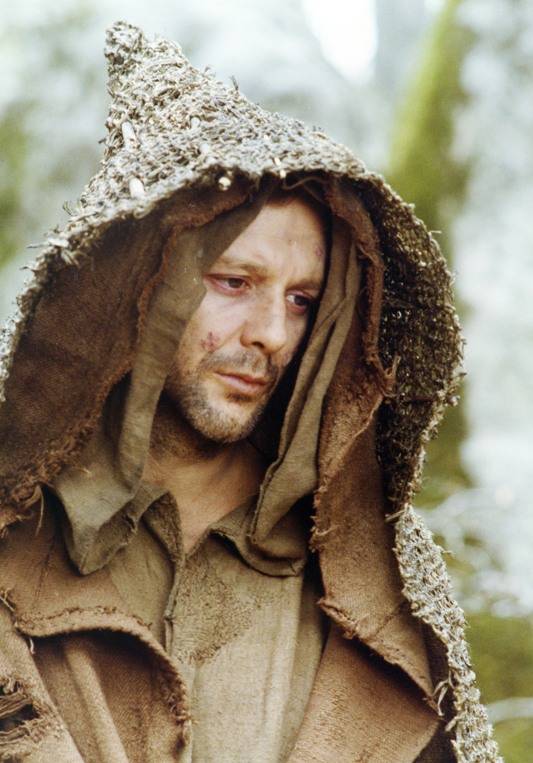
Francis and Pope Innocent III
Francis managed to get a letter of recommendation from Assisi Abbot Guido to Giovanni di Sao Paulo (Roman Cardinal St. Paul John), who arranged for him to meet with Pope Innocent III - thereby sending the crusaders to kill the Cathars of Southern France. Francis came to the pontiff with the charter of the new monastic Order written by him. The petitioner (unkempt, with a long beard and rags) impressed dad if he made one, then the most unpleasant one. Innocent mockingly advised him: “Go, my son, and look for the pigs; you seem to have more in common with them than with people. Wallow with them in the mud, give them your charter and practice them in your sermons. ”
Francis did so. All in the mud, he returned to dad and said: "Lord, I have fulfilled your order, hear now you are my prayer."
Tradition claims that Innocent III agreed now because he saw in a dream a beggar monk who supported the rickety Lateran Cathedral. But, most likely, intuition prompted Innocent that this strange guest was not so simple, and his preaching of asceticism and love for his neighbor should be used in the interests of the papal throne - otherwise in Italy a new dangerous heresy like the teachings of the Waldenses could arise. On the advice of the already mentioned Giovanni di São Paulo, Innocent in the 1209 year verbally approved the one founded by Francis in the 1207-1208 years. brotherhood of minority.
In the fall of 1212, Francis tried to convert Syrian Saracens to Christianity, but his ship crashed near the island of Slavonia. In 1213, he went to Morocco, but returned, ill on the way.
Saint Clara and the Order of the Poor Ladies
In 1212, the first woman joined the Franciscan movement - 18-year-old Chiara (Clara) Offreducci from a wealthy Assisi family, whom Francis helped to escape from home. Later, at the age of 21, she headed a nunnery, which was located in the house at the first church renovated by Francis (St. Damian). At the end of her life, due to illness, Clara could not participate in masses, but she was visited by visions in which she saw a mass on the wall of her room. On this basis, in 1958, Pope Pius XII declared her the patroness of television. She died on 11 on August 1253 of the year - the day after receiving the papal bull, which confirms the charter of the female monastic Order of the Poor Ladies (Poor Clarisse) that she wrote. In 1258, she was canonized. And in 1255 year in different countries there were already more than 120 monasteries of the Order of the Poor Clarisse.

The successes of Francis and the approval of the Order of Minority
In 1212, a fraternity of minority terciaries was formed, which could include lay people. And in 1216, the new pope Honorius III made an incredible gift to Francis: he granted indulgence to everyone who visited Porciunculu on August 2, a small Franciscan chapel located on a hill near Assisi (Assisi pardon). Since then, this pilgrimage has become a tradition, and the Porciunculus is now sheltered under the arches of the Basilica of St. Francis in Assisi (this is one of the six great churches of the Catholic Church).
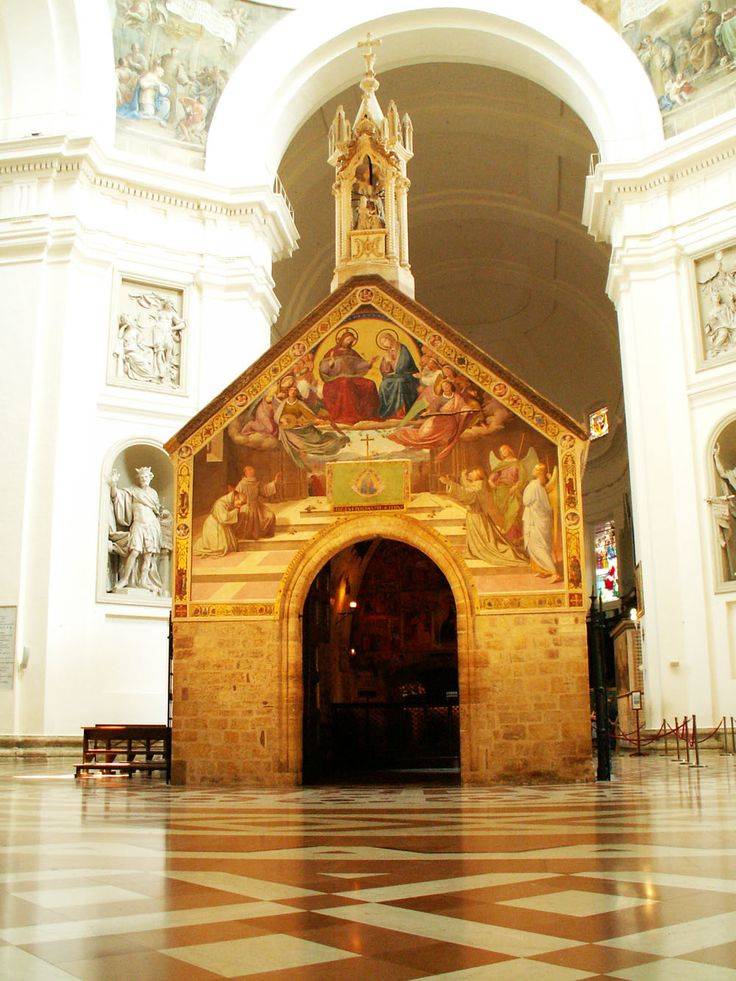
Interestingly, the hill at Porciuncula was previously called “Hellish”, since criminals were executed on it. But after the construction of the Sacro Convento monastery there (started in the 1228 year), the hill began to be called "Paradise."
The Basilica of St. Francis (the frescoes for which Giotto painted) was erected here, where in 1236 his body was transferred. Near the Basilica stands the equestrian monument to Francis, which causes some bewilderment. The fact is that in Italy there is a saying “Andare con il cavallo di San Francesco” - “ride a horse of St. Francis”. And she means “to walk” - like a saint and his disciples.
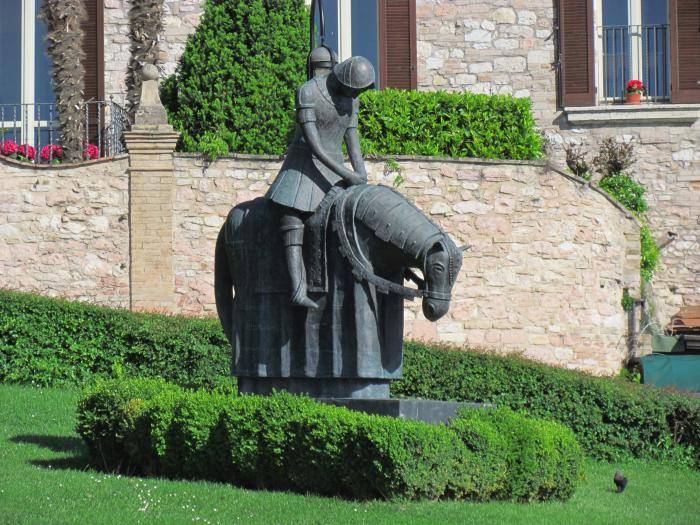
But back in May 1217, when it was decided to organize the Franciscan provinces in Tuscany, Lombardy, Provence, Spain, Germany and France, where Francis's disciples went, and he intended to move to France, but he was dissuaded by Cardinal Ugolino di Senyi Ostiysky (Innocent nephew III), with whom he went to the Vatican.
Tradition says that in 1218, Cardinal Ugolino of Ostia (future pope Gregory IX, who canonizes both Francis and Dominic), invited them to unite their Orders into one, but Francis refused.
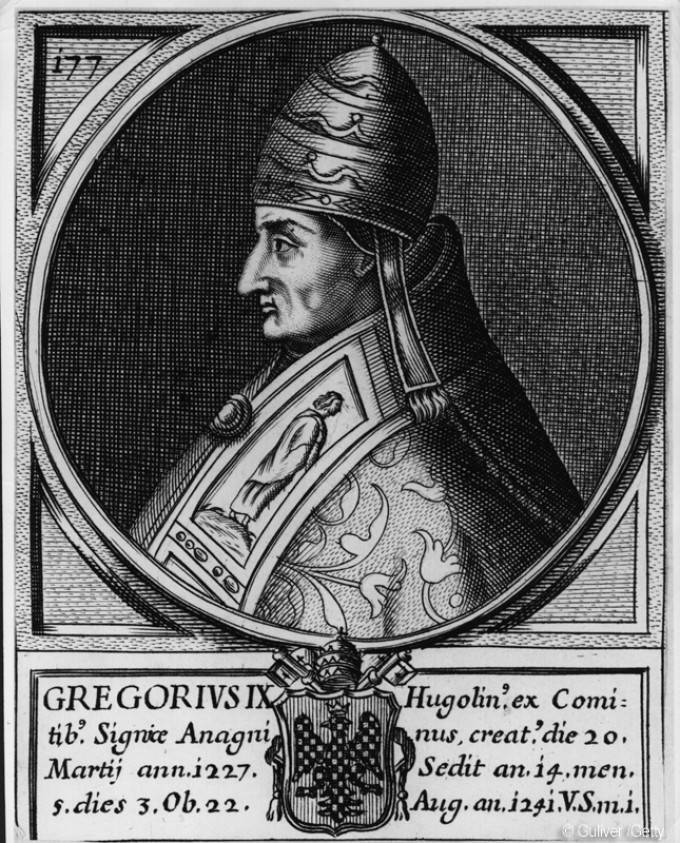
In that year, Francis' popularity in Italy reached its peak, he was met everywhere by real crowds of grateful listeners, patients were brought to him, some kissed the ground at his feet and asked permission to cut off a piece of his cassock as a relic. On the occasion of the 1219 Trinity of the year, around 5 thousand huts were built around Francis's hut (near Assisi) by his followers.
In 1219, Francis nevertheless made an attempt to convert Muslims, going to Egypt, where just at that time the crusader army besieged the port city of Damietta.
Here Francis went to the enemy camp, where, of course, he was immediately captured, but he was lucky - surprised by the fearless behavior of the strange "franc", the soldiers took him to the Sultan. Malik al Kamel received him quite favorably, but of course he did not want to renounce Islam, having promised only to graciously treat the captive Christians. With the crusaders, Francis was before the capture of Damietta. After visiting Palestine, Francis returned to Italy in 1220, where rumors had already passed of his death. While he “walked the world like God's forgiveness” (Chesterton), one of the “brothers” went to Rome with the charter of a new monastic Order, and Deputy Francis changed the charter of the Order and allowed to accept donations, because “it is not in human nature to refuse wealth” . Seeing in Bologna the rich building built for the Order, Francis asked: “Since when did they insult the Lady of Poverty?”
But to demolish this building, or abandon it, as you probably guessed, no one began.
In general, Francis now had no previous position and power in the Order, and never will be.
At a meeting of the members of the Order in Porziuncula and Vitsundin (1220 or 1221), 5000 brothers and 500 candidates, demonstrating all respect for their spiritual leader, demanded that the strict rules be relaxed. Unable to meet them or fight them, Francis ceded the post of head of the order to Peter Cattanei, who was replaced in a year by “brother Elijah”.
Francis no longer intervened in the administrative and business affairs of the Order, but he had not completely retired. In 1221, with his active participation, another branch of the Order was created - now it is called the Order of the Penitent Brothers and Sisters (Brothers and Sisters of Penance). It consists of people who cannot leave the World, but help the Franciscans and the Clarisse, and observe some restrictions: for example, they do not take up arms, do not participate in litigation. The charter of this Order was approved in the 1289 year.
Using his authority, in 1223, Francis wrote a new set of rules for his brothers, reducing the number of chapters from 23 to 12, which reaffirmed three vows - obedience, poverty, and chastity. In the same year, this charter was approved by Pope Honorius III.
The already existing organization was now officially recognized by Rome and was called the Order of the Minorite Brothers, whose members were often called (and are called) Franciscans. He was led by a “general minister," who is often called a general.
In England, Minorites were also called "gray brothers" (by the color of their robes). In France - “cordelers” (because of the rope with which they were belted - corde, cordage). In Germany, they were “barefoot” (they walked in sandals on their bare feet). And in Italy - often just “brothers.”

Two hands became the symbol of the new order: Christ (nude) and Francis (dressed in a habit - vestments of a minority monk), raised to the coat of arms of Jerusalem. The motto is the phrase "Peace and Good."
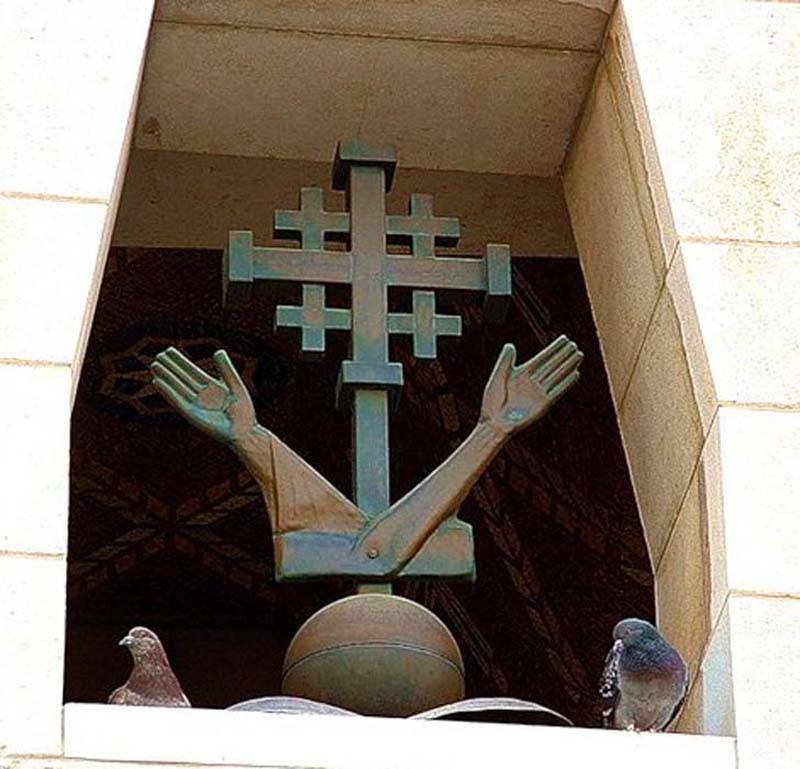
In the same 1223 year, Francis initiated the reconstruction of the Bethlehem environment in churches on the eve of Christmas and became the founder of the rite of worship of the Holy Nursery.
Pyrrhic victory of Francis
Since Francis and his students condemned the money-grubbing of priests and church hierarchs and did not approve of the possession of material wealth by the Church, at first they were forbidden to preach to the laity. But soon this ban was lifted, and in 1256 the Franciscans got the right to teach at universities, while they were hired “out of competition”, which even caused a riot in France of other professors who were not members of this Order. At one time, the Franciscans were popular as confessors of the crowned persons of Europe, but were subsequently ousted from these posts by the Jesuits. More - more: Franciscan monks began to fulfill the duties of inquisitors in Wenssen, Provence, Forkalka, Arles, Embren, cities of central Italy, Dalmatia and Bohemia.
But it was precisely these successes that became fatal to the great cause of Francis.
The tragedy of the life of Francis was that his many followers were not saints, but ordinary people, and did not at all want to be poor. While Francis was near, the power of his example infected people, but when he left the disciples, temptation immediately penetrated their hearts. During the life of Francis, the bulk of the monks abandoned his ideas. The seventh General of the Order, Giovanni Fidazza, became a cardinal in 1273, several bishops appeared in the leadership of the Order.
Probably, this was for the better: it is easy to assume that Italy would have been in bloom if there were enough of his students left after Francis' death, equally fanatically devoted to the ideas of “righteous poverty”, but less peace-loving. Recall the Dominican Girolamo Savonarola, who actually ruled Florence in 1494-1498: he invited women to cover their faces, like Muslim women, and instead of carnivals to organize processions of children collecting alms. In Florence, the production of luxury goods was forbidden and a “burning vanity” was arranged - paintings, books (including Petrarch and Dante), playing cards, expensive household items. Sandro Botticelli then personally brought unsold paintings to the fire. And Jean Calvin in Geneva, according to Voltaire, "widely opened the doors of the monasteries, but not so that all the monks would leave them, but in order to drive the whole world there." In “Protestant Rome,” priests regularly came to their homes to check if the nightgowns of their parishioners' wives were modest enough and to make sure there were no sweets in the kitchen. Children in Geneva at Calvinist were happy to report to insufficiently pious parents. In general, let the ascetics remain ascetics, and ordinary people, with all their advantages and disadvantages, ordinary people. It will be better for everyone.
Francis, apparently, at the end of his life had neither the strength nor the desire to defend his point of view. Back in the 1213 year, Count Orlando di Chiusi gave him Mount La Verna in the Tuscan Apennines at the Kazentin Valley (1200 meters high): “a heap of harsh rocks at the confluence of the Tiber and Arno,” Dante described it.
Francis set off on this mountain with only three satellites at the beginning of 1224, in the sky above La Verna he had a vision of a giant cross, after which stigmata appeared on his palms - bleeding marks from nails, signs of the five wounds of the crucified Christ.
After this, his condition deteriorated sharply, he suffered from constant pain throughout his body and was almost completely blind. In September 1225, he last visited the monastery of Klara and the first church he repaired - St. Damian. This winter, Francis spent in Siena, from there he was transported to Cortona. Francis, who was already dying, was taken with great caution to Assisi - the companions were afraid of the attacks of traditional rivals from Perugia, who wished to take possession of the still living ascetic, so that later they could bury him in the cathedral of his city. In Assisi, Francis was settled in the bishop's palace, from where, before his death, he was transferred to Porciuncula.
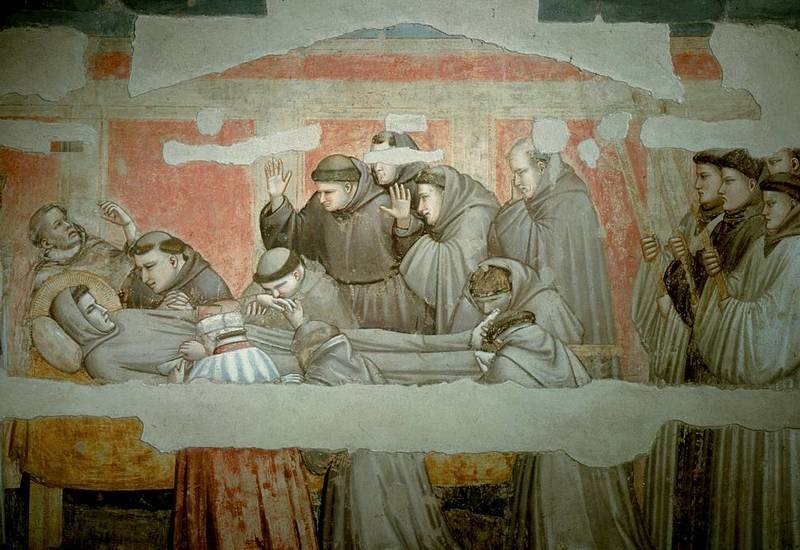
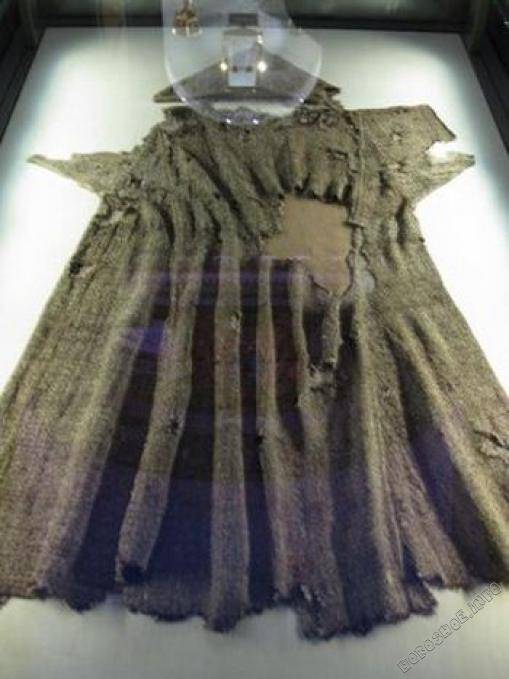
Francis died on 3 on October 1226 at the age of 45.
It is claimed that in the year of his death the number of monks of the Order of Minority reached 10 thousand people.
Francis was canonized in the year 1228. And already in September 1230, Pope Gregory IX in the bull “Quo elongati” declared that the “Testament” of the saint (with the requirement to remain poor) “has only spiritual, but not legal significance. To legitimize the numerous acquisitions of the Order, at the beginning of the XIV century its property was declared to belong to the Church, only provided by it to the Franciscans.
In 1260, Mr. Giovanni Fidanza (Cardinal Bonaventure), elected head of the Order, insisted on the so-called “Narbonne Constitutions”, which he condemned “excessive fascination with poverty,” at the General Capitul convened by him. It was also condemned by the prevailing opinion among some Franciscans that "teaching is worthless to ascend to holiness."
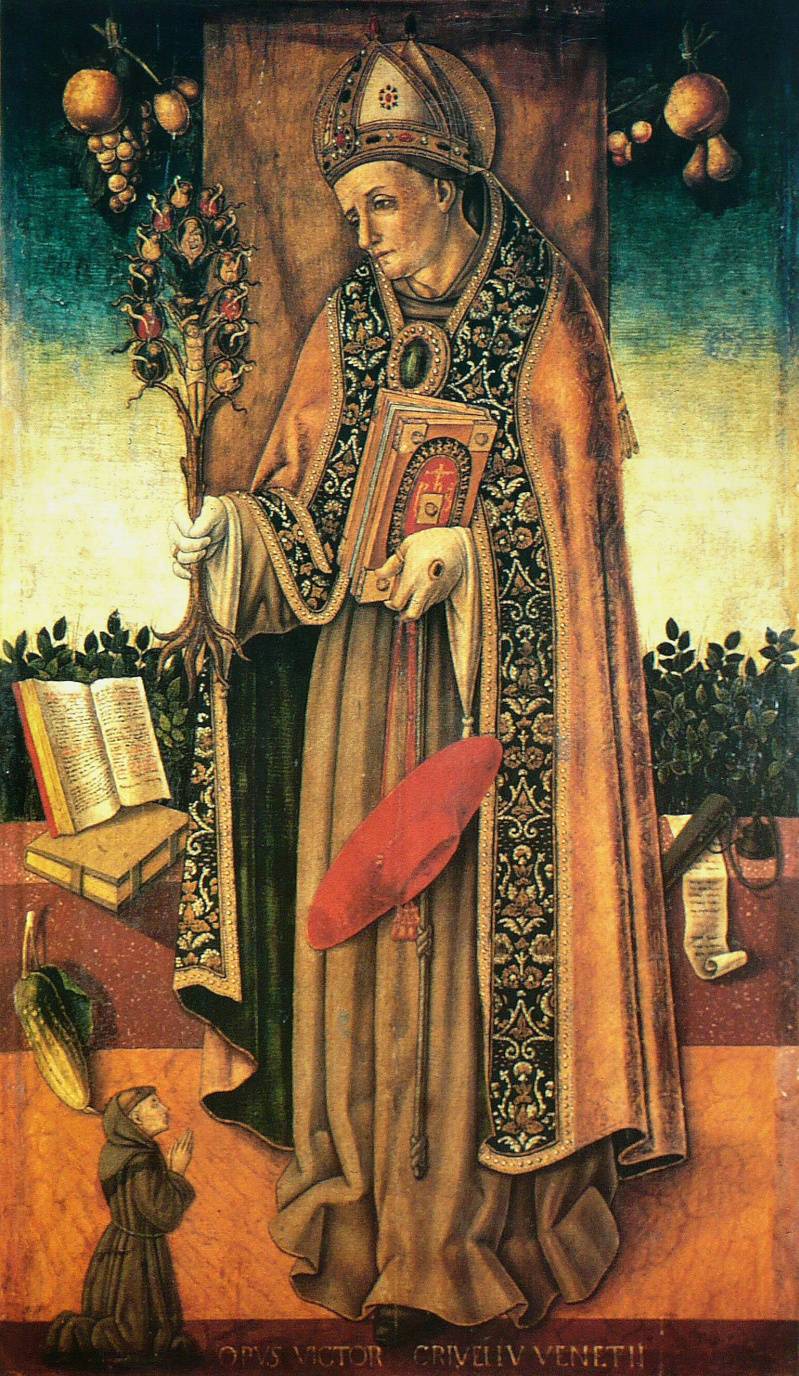
An opposition to innovations arose in the Order, which resulted in a movement of spirituals (mystical Franciscans). And since their protest inevitably took social forms (condemnation of greedy and unrighteous hierarchs), spiritualists were charged with the standard heresy charge. In 1317, Pope John XXII, in fear of excommunication, ordered them to submit to the authority of the main (conventional) wing of the Order. Many of them refused - they were called Fraticelli (“half-brothers”). In 1318 four of them were burned by the Inquisition, and in 1329, Pope John XXII completely excommunicated the “radicals” from the Church. How heretics of spiritualists were condemned until the year 1517, when Pope Leo X divided the Order in the Bull “Ite vos”: the Lesser Observant Brothers appeared (who defended their right to “be poor”) and the Lesser Conventional Brothers. And in 1525, part of the monks, under the leadership of Matteo Bassi, stood out in the Capuchin Order (“Lesser Brothers of Hermit Life”), which in 1528 was recognized as independent by Pope Clement VII.
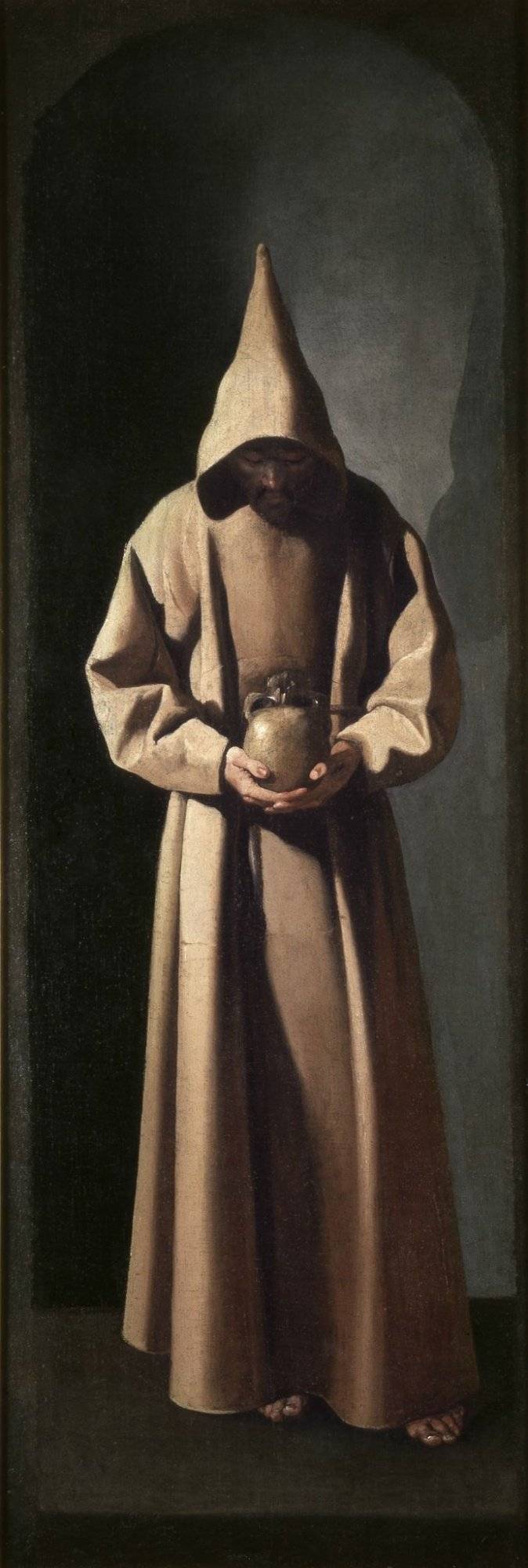
It was easy to recognize capuchins by their pointed cap (it was for him that they got their name). Tradition claims that the monks of this Order were the first to add milk to coffee so that it cleanses the “sinful drink”: this is how the “cappuccino” appeared.
Only at the end of the 19th century did Pope Leo XIII achieve restoration of the unity of all these groups.
Part of the Franciscan Order are the Women’s Order of the Poor Claris and the Order of the Laity of St. Francis (tertiary), which even once included the French King Louis IX.
By the beginning of the 18th century, the Franciscan Order had in its submission 1700 monasteries in which 25 thousands of brothers lived.
Six Franciscans became popes (Nicholas IV, Celestine V, Sixtus IV, Sixtus V, Clement XIV, Pius IX).
The names of some Franciscans have remained in the history of science. Here are some of them.
Roger Bacon (nicknamed “The Amazing Doctor”), an Oxford professor, philosopher, mathematician and alchemist, invented a magnifying glass and lenses, with which he read and wrote in old age.
William Ockham, philosopher and logician, nicknamed the disciples "invincible." Among these students was the notorious Jean Buridan.
Bertold Schwartz is considered the European inventor of gunpowder.
Fra Luca Bartolomeo de Pacioli (1445-1517) was the founder of the principles of modern accounting, the author of the textbook of commercial arithmetic, treatises "The Sum of Arithmetic, Geometry, Relations and Proportions" and "On the Game of Chess", and many other works. His treatise, On Divine Proportion, was illustrated by Leonardo da Vinci (“with his indescribable left hand,” said Pacioli himself).
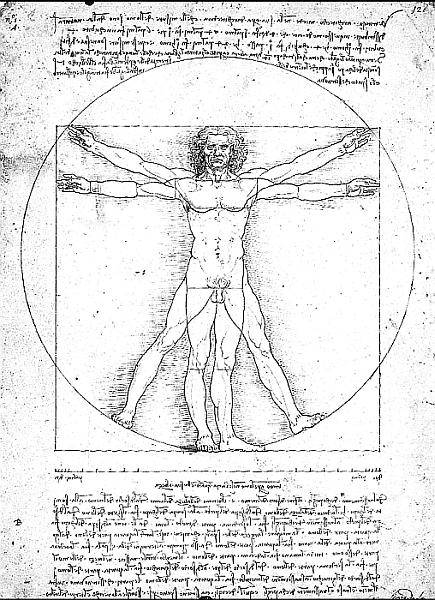
Pacioli and da Vinci were friends, and in October 1499 of the year they fled together from Milan, captured by the troops of Louis XII.
Luca Pacioli in the robes of a Franciscan monk gives a geometry lesson
Pay attention to the face of the student Pacioli: we see very similar on the self-portrait, written by Durer in 1493 year:
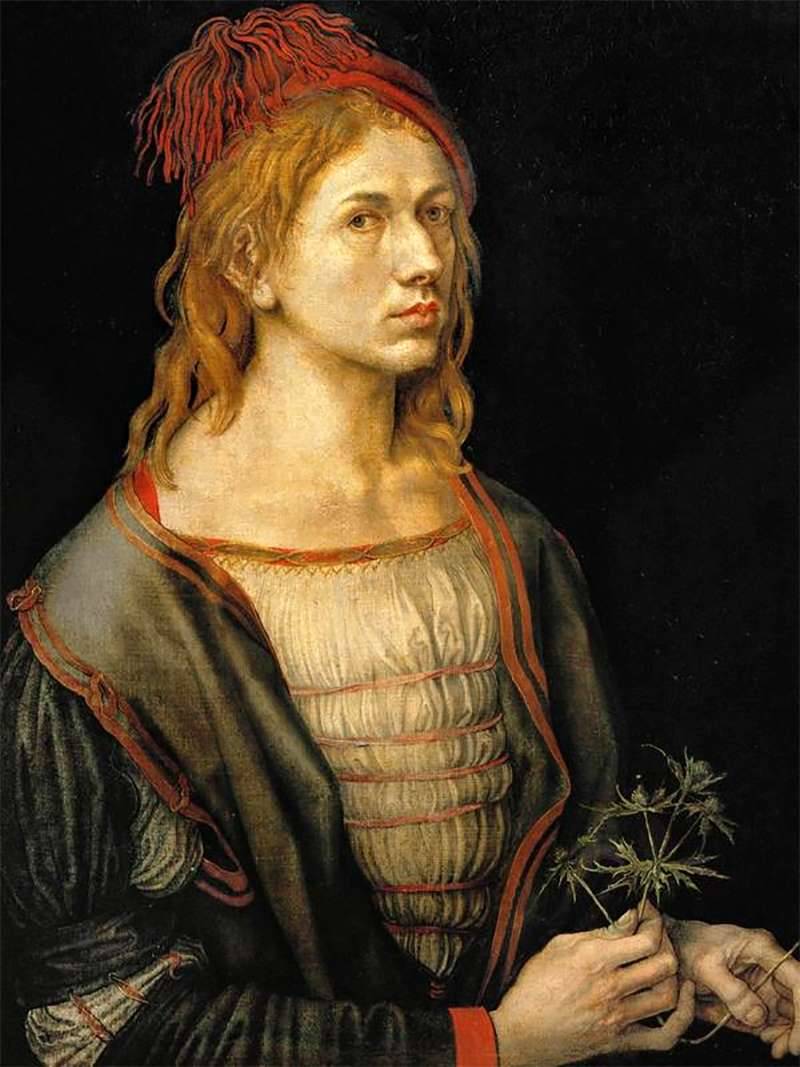
Albrecht Durer met with Jacopo de Barbari in Venice in the 1494-1495 years, and Pacioli in Bologna in the 1501-1507 years. In one of the letters of that time, Dürer wrote that he went to Bologna "for the sake of art, since there is a person who will teach me the secret art of perspective." Most likely, it is about Pacioli.
Bernardino de Sahagun became the author of the "General History of the Affairs of New Spain" - the first work narrating about the Aztecs and their culture. His fellow Antonio Ciudad Real compiled a six-volume Mayan dictionary.
Guillaume de Rubruck by order of the French King Louis IX in 1253-1255 He traveled from Akka (Acre, North Palestine) to Karakoram (through Constantinople and Saray) and wrote the book "Journey to the Eastern Countries."
45 Franciscans were canonized after being executed in Japan during the time of persecution of Christians in this country.
The Territories of the Order of Minority were Dante, Petrarch, Michelangelo and Rabelais.
Antonio Vivaldi was an abbot of a minority monastery in Venice, he began his musician career as a music teacher in an orphanage.
And the ranked Spaniard Himeles Malia Seferino (died in the 1936 year during the Civil War), was "appointed" by John Paul II as the patron of the gypsies.
Among other well-known Franciscans, one can recall the legendary brother of Took - one of the most famous and popular associates of the equally legendary Robin Hood.
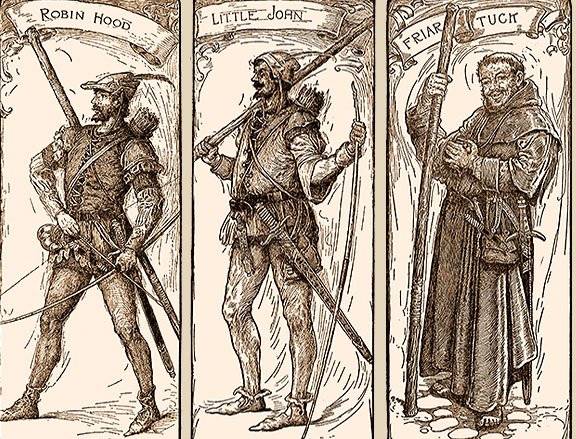
One of the heroes of Shakespeare’s tragedy “Romeo and Juliet” is Lorenzo’s brother, the monk of the Verona Franciscan monastery of Sen Zeno, and Wilhelm of Baskervilsky is the protagonist of Umberto Eco’s novel “The Name of the Rose”.
At present, there are about 18 thousand members of the Order of Minorites; Franciscans retain their influence in many Catholic countries. The heirs of the impoverished Francis own considerable property, have their own universities, colleges and publishing houses.
The monks of this Order live and preach in Europe and Asia, in the Americas, in Africa and Australia.
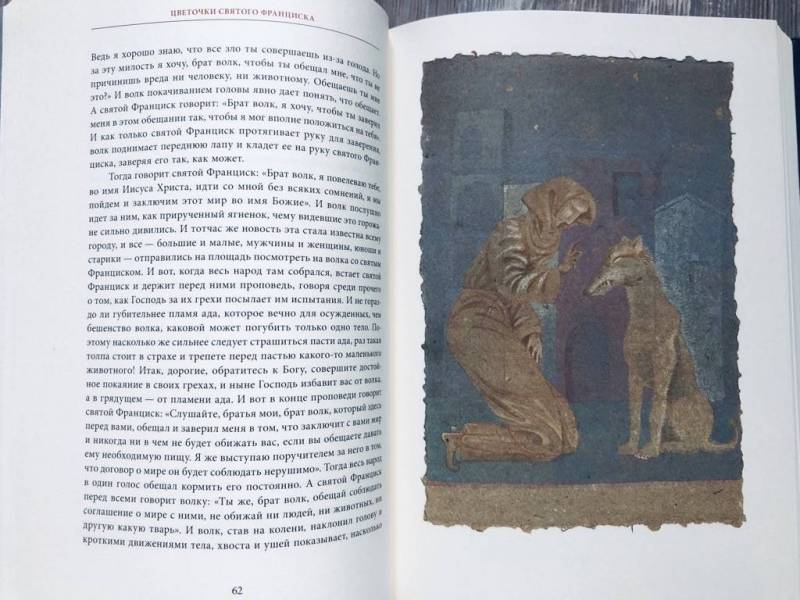
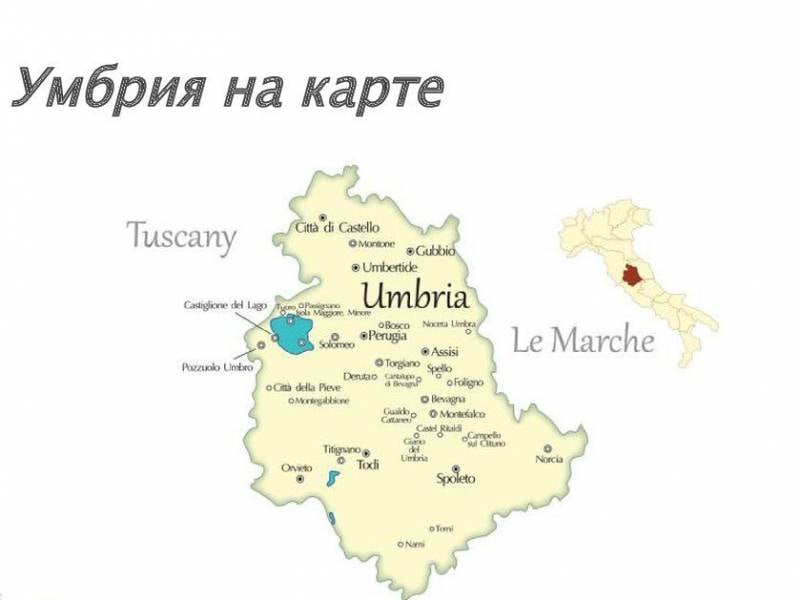
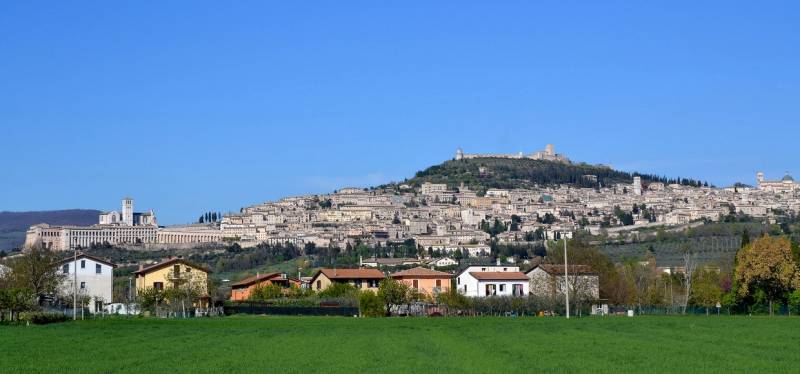
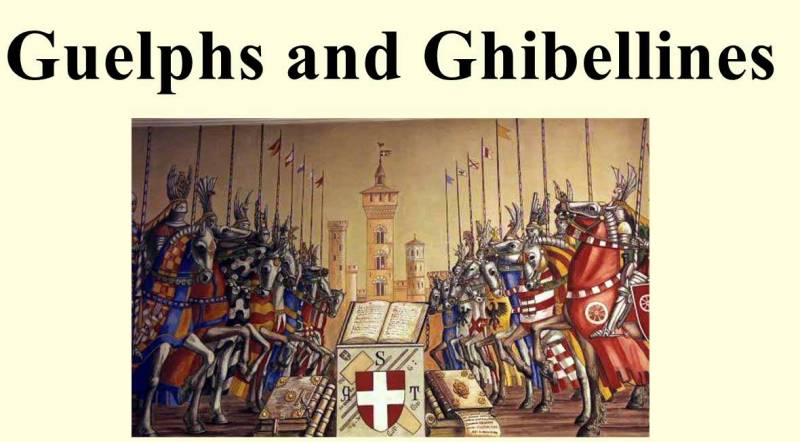
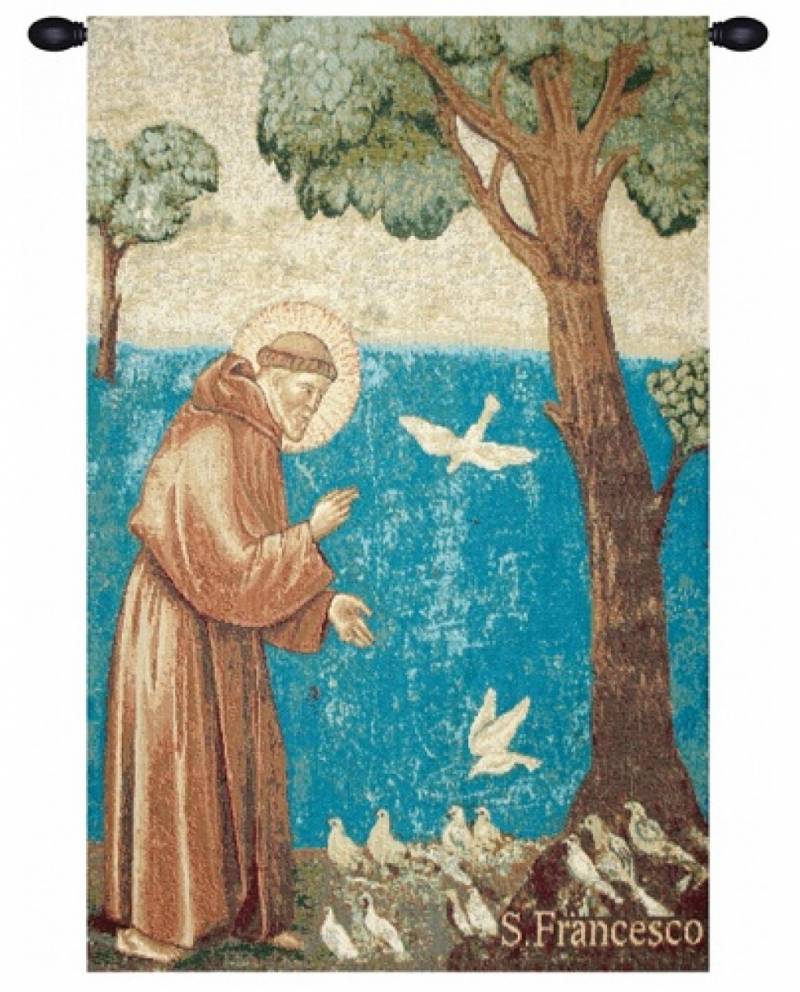
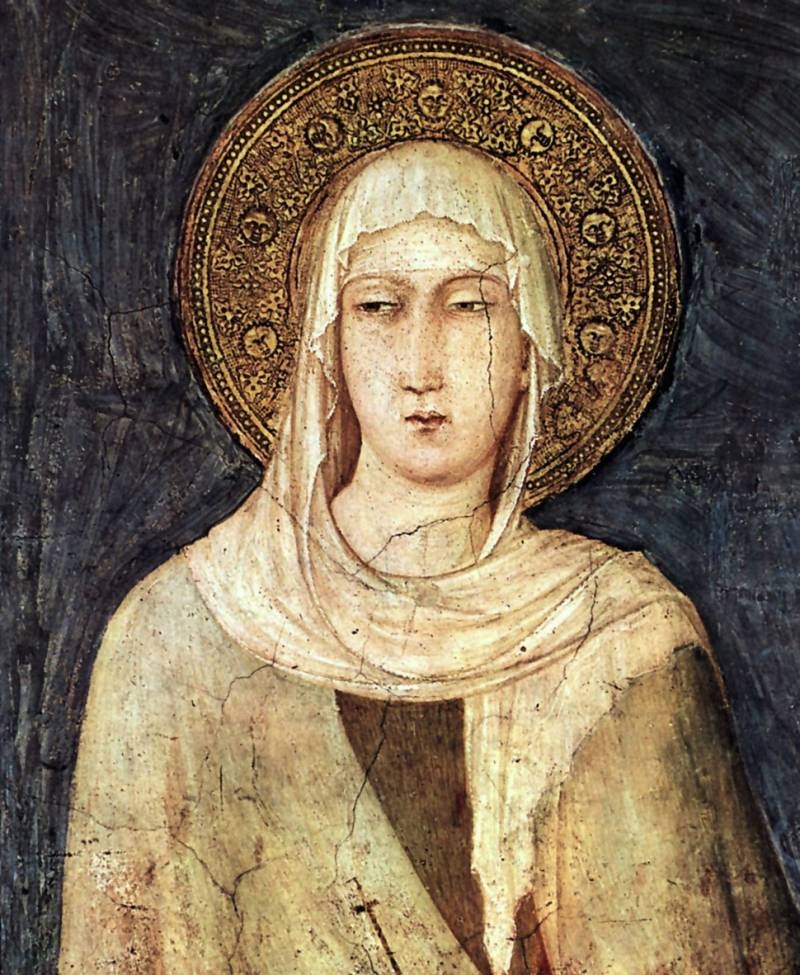
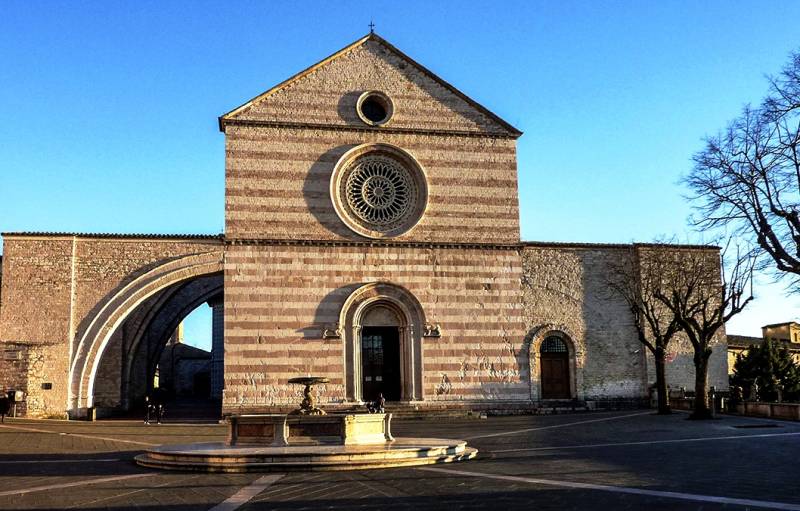
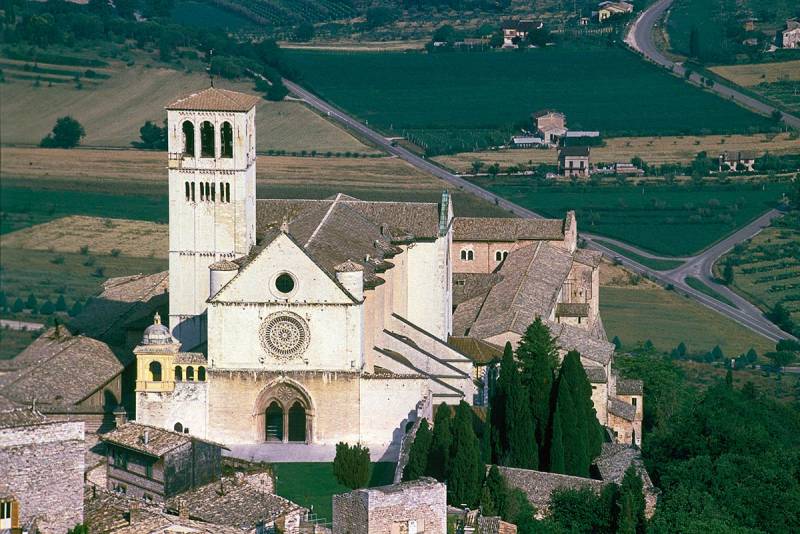
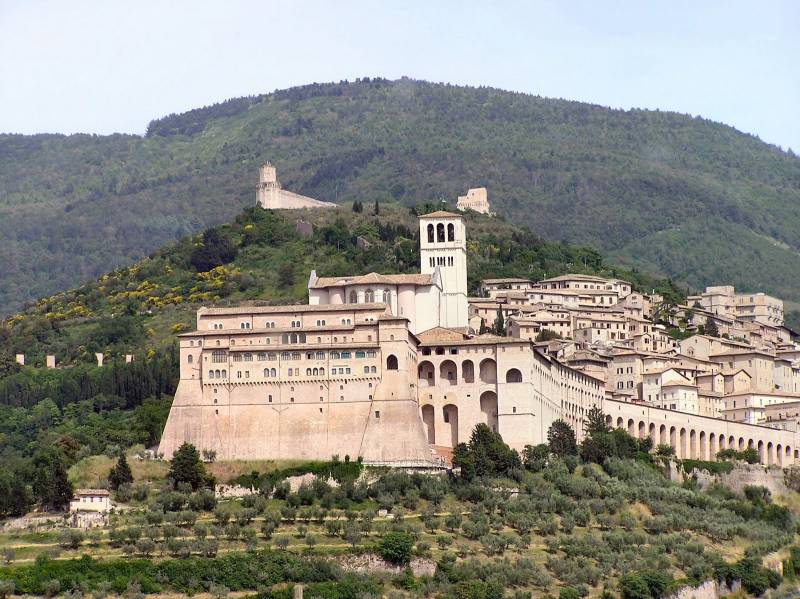
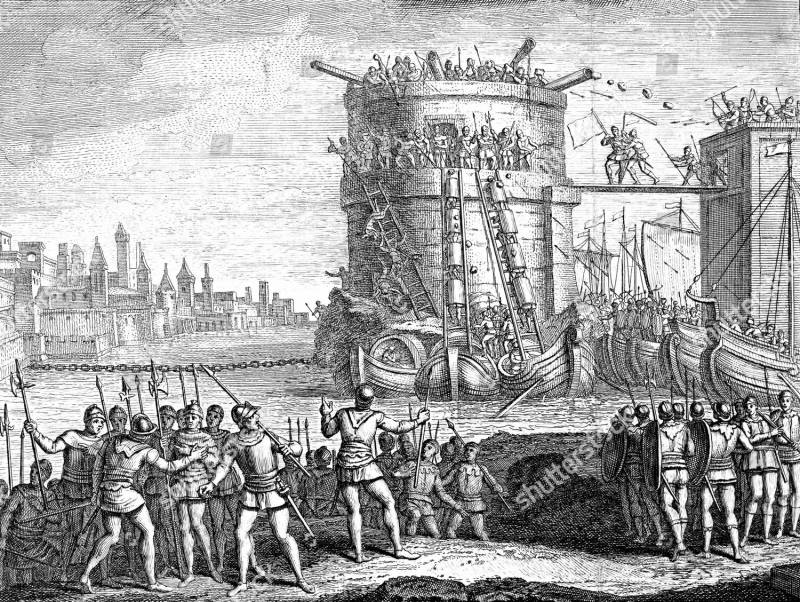
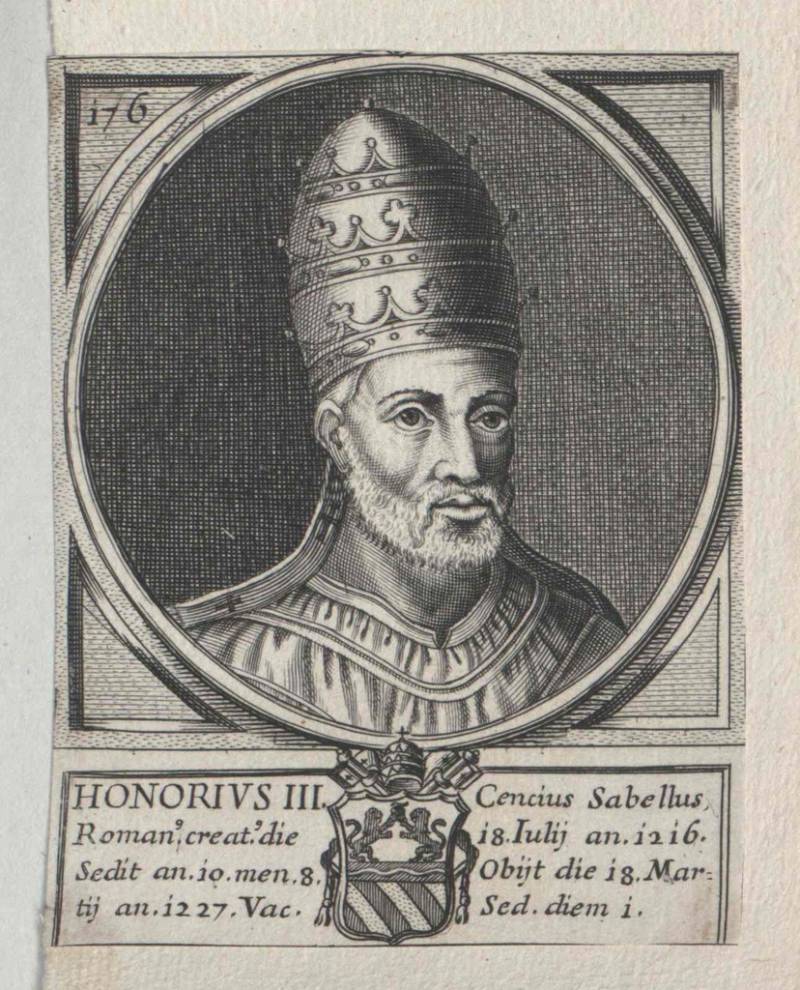
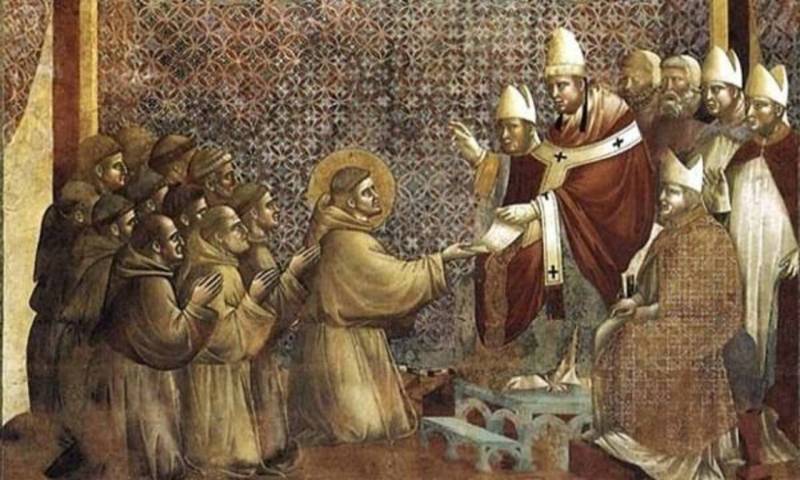
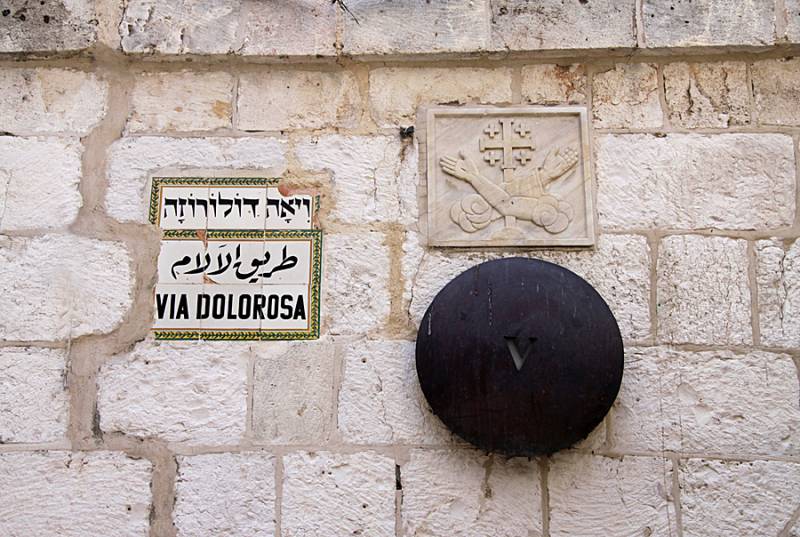
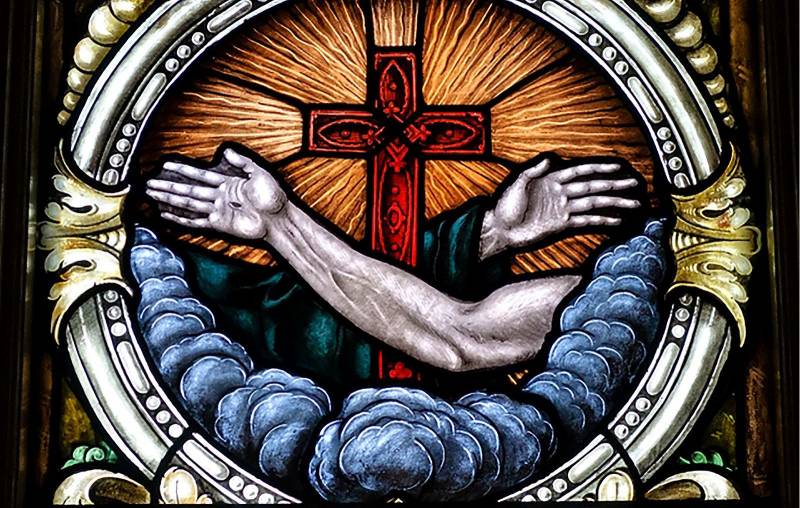
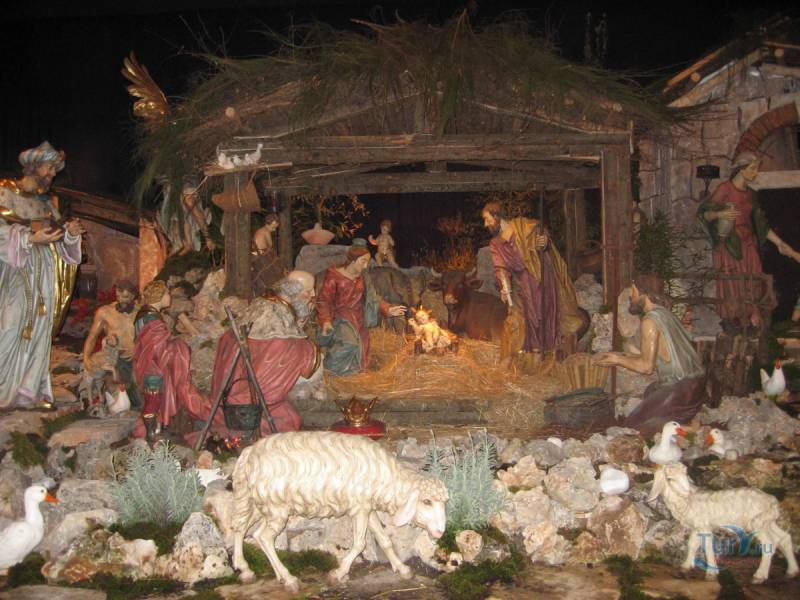
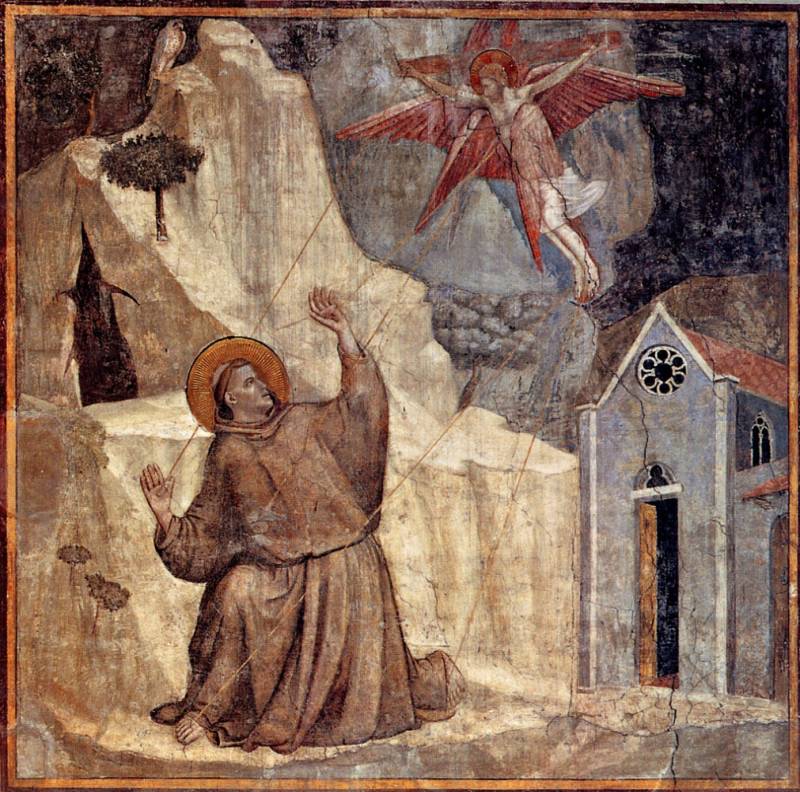
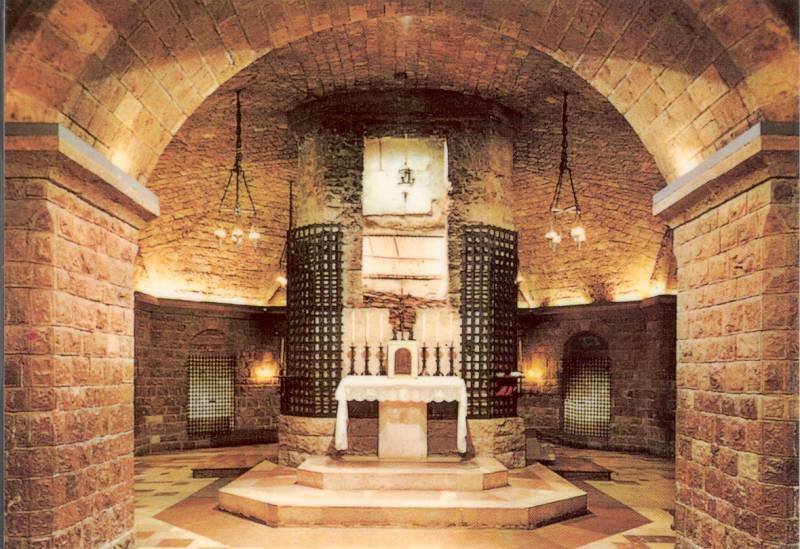
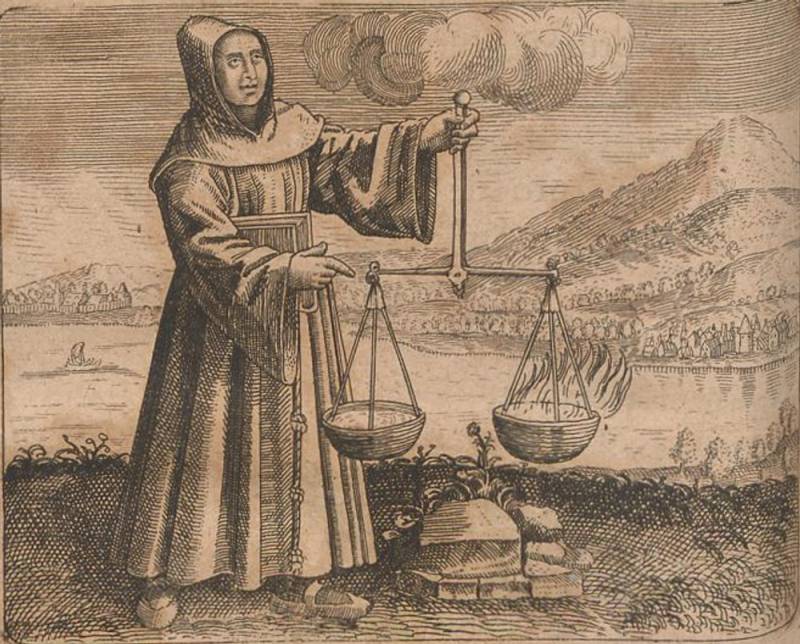
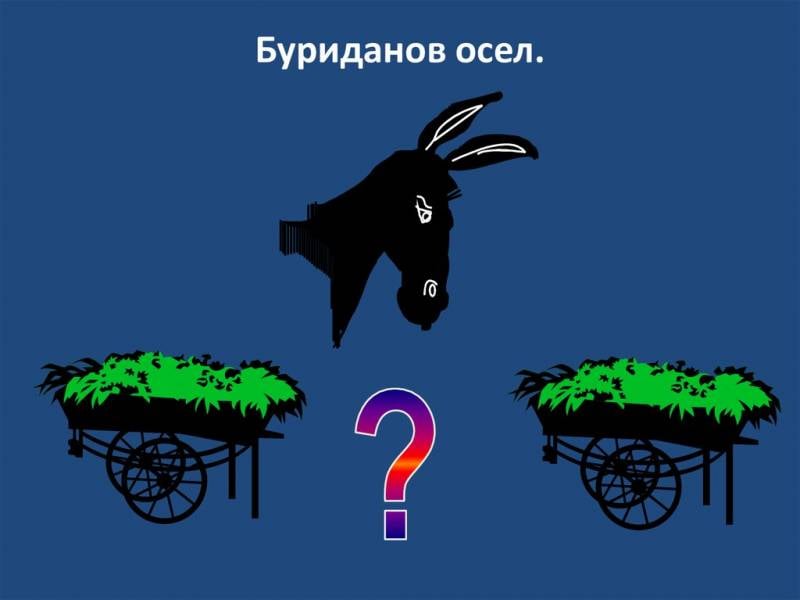
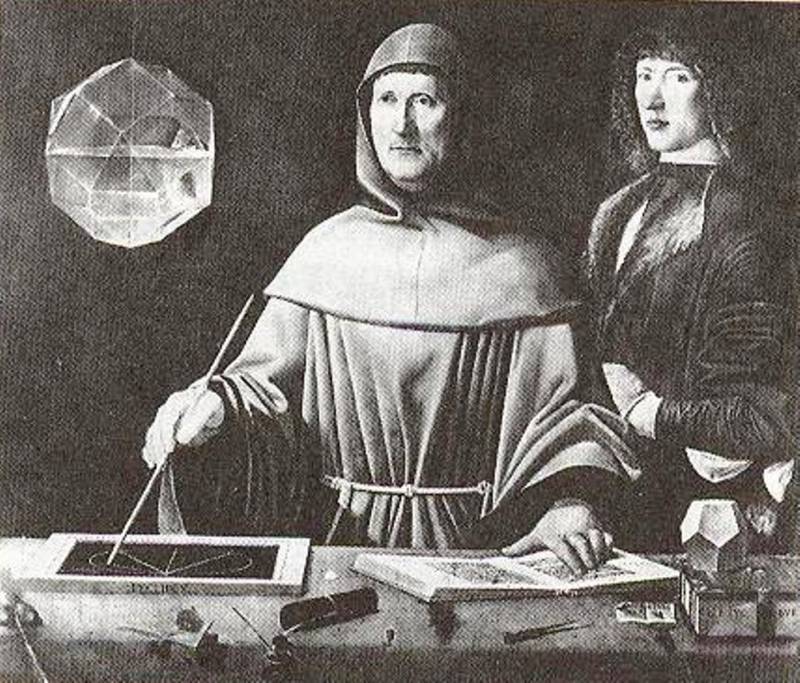
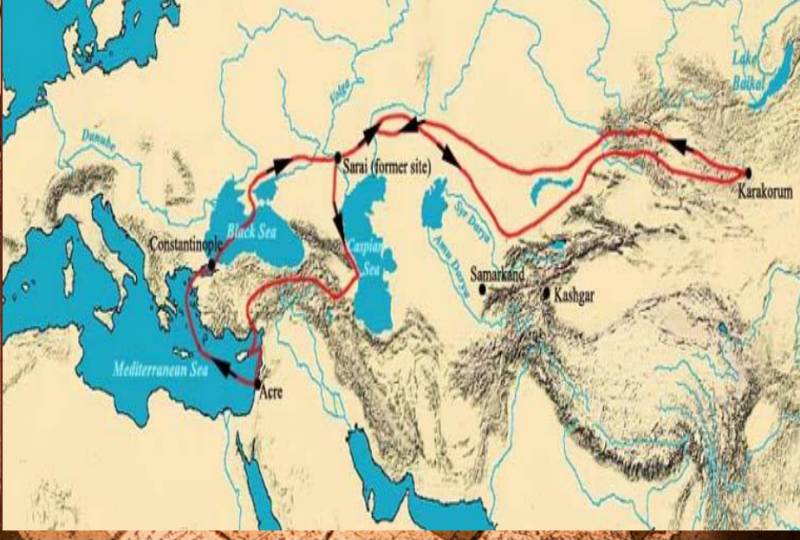
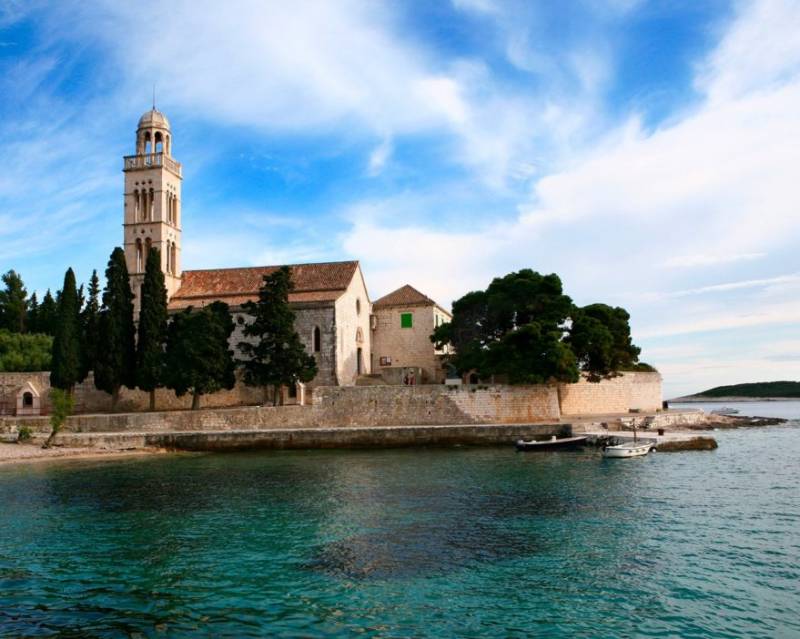
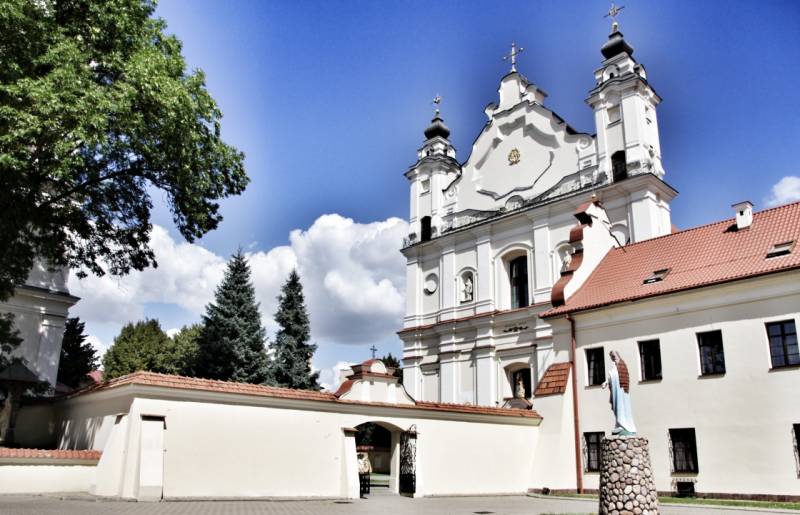
Information